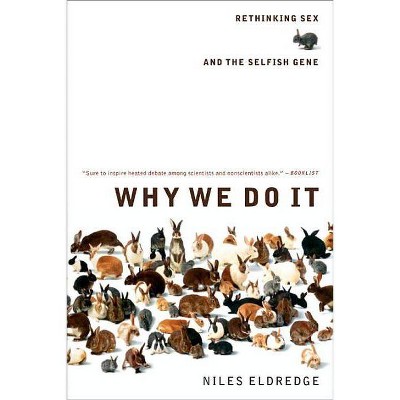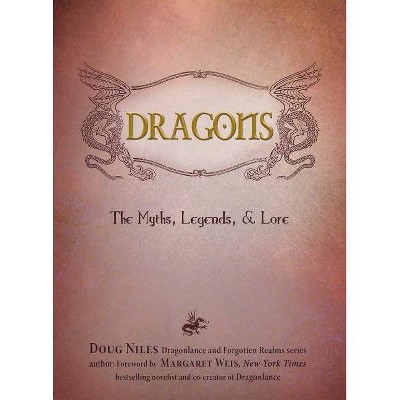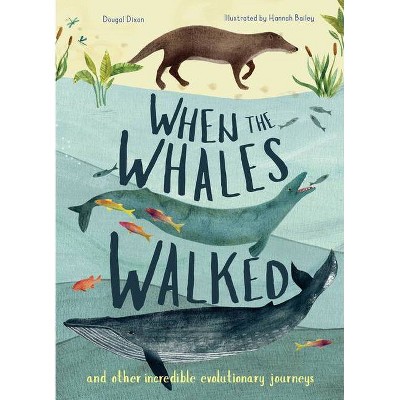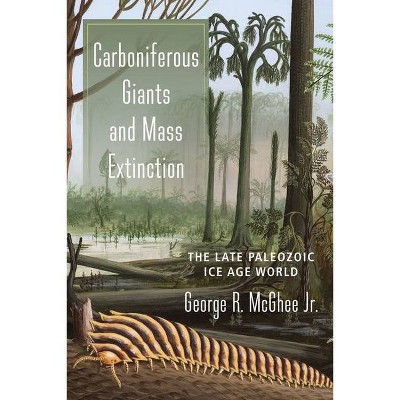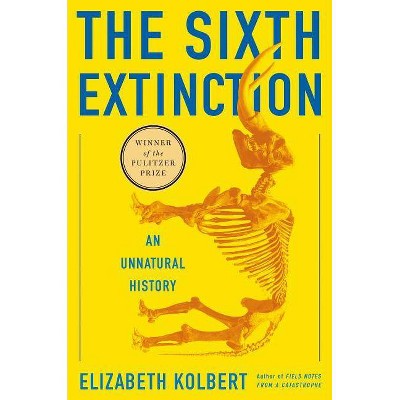Extinction and Evolution - Annotated by Niles Eldredge (Hardcover)
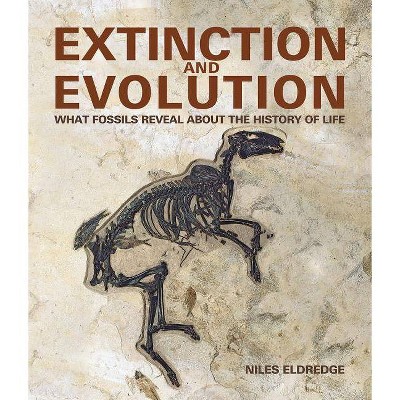
Similar Products
Products of same category from the store
AllProduct info
<p/><br></br><p><b> Book Synopsis </b></p></br></br><p> <i>This book is a splendidly illustrated and thoughtfully constructed account of one of the greatest ideas ever conceived by the human mind -- evolution. Eldredge has cleverly combined our knowledge of living organisms with instructive insights into the fossil record to convincingly argue that evolution is, indeed, the grand unifying idea of biology.</i></br> -- Donald C. Johanson, Founder of the Institute of Human Origins, and author of <i>From Lucy to Language</i> </p><p> <i>Extinction and Evolution</i> recounts the work and discoveries of Niles Eldredge, one of the world's most renowned paleontologists, whose research overturned Charles Darwin's theory of evolution as a slow and inevitable process, as published in <i>On the Origin of Species</i> in 1859. Darwin had concluded that evolutionary changes happened very slowly over millions of years. Eldredge's work, however, convinced him that Darwin was wrong and that major evolution of life forms does not happen to any significant degree until after a mass extinction event, thus disproving the traditional view of evolution. </p><p> Eldredge's groundbreaking work is now accepted as the definitive statement of how life as we know it evolved on Earth. This book chronicles how Eldredge made his discoveries and traces the history of life through the lenses of paleontology, geology, ecology, anthropology, biology, genetics, zoology, mammalogy, herpetology, entomology and botany. While rigorously accurate, the text is accessible, engaging and free of jargon. </p><p> <i>Extinction and Evolution</i> features 160 beautiful color plates that bridge the gap between science and art, and show more than 200 different fossil specimens, including photographs of some of the most significant fossil discoveries of recent years. This is a book with appeal to a broad general audience, including natural history readers and students. </p><p/><br></br><p><b> Review Quotes </b></p></br></br><br>In a world where science is under assault from many angles, this wonderfully illustrated account of how evolution joins nature in all its disparity into a single flow is both timely and authoritative. Author Eldredge, a renowned paleontologist, explains in accessible prose how fossils reveal the hidden history of life in the earth's ancient past. Fossils have been preserved in layered geological sediments, offering scientists the chance to record the eras when long-extinct creatures lived. Eldredge details how paleontology and genetics work together to reveal how the same evolutionary processes that drove the development of life over time continue to create the diversity of life on earth today. In seven chapters, he discusses the interconnected reasons for why life evolves, adapts, and dies out. Eldredge also covers key evolutionary concepts such as convergence (when natural selection produces similar organisms that nonetheless come from separate lineages), and he articulates why evolution explains the pattern of similarity interlinking all forms of life. This book is richly illustrated with full-color photographs of fossils -- everything from trilobites to human ancestors -- and should appeal to both specialists as well as general readers.-- "Publishers Weekly" (12/8/2014 12:00:00 AM)<br><br>Niles Eldredge has published a book in the Simpsonian tradition of evolutionary paleontology that is also indisputably full of pictures of fossils-- there are 160 color plates, the vast majority of which are beautiful photos of paleontological specimens. These pictures accompany seven concise chapters, plus an epilogue, that first bring the reader up to speed on the basics of evolutionary theory and then launch into a brief but admirably clear and informative exploration of some of the ways in which that theory has been augmented and modified by paleontologists over the past few decades of ongoing research... [including] an explanation of punctuated equilibrium, the model of evolution that Eldredge developed with Gould beginning in the early 1970s. Punk eek, as it's sometimes called, is the notion that species normally exist in a condition of stasis; most large-scale evolutionary change is associated with the formation of new species. Eldredge lays out the idea deftly and persuasively, drawing for his primary example on the trilobite fossils that first got him thinking about stasis during his graduate student days... The photos, most of which were taken by the late Murray Alcosser, add up to an important work of popular science in their own right: not only visually appealing, but also able to convey morphological information with an efficiency that makes them worth the proverbial thousands of words of written description. When the pictures are well integrated with the text, the book's presentational style works beautifully. In the chapter on human evolution, for example, the numerous photos of skulls and other bones of Homo erectus, Australopithecus afarensis, and other hominins do an excellent job of supporting the written discussion and bringing the reader almost literally face to face with the raw facts of the human fossil record... The amount of evolutionary ground covered in the relatively short text, and the clarity with which it's laid out for the benefit of the reader, are exemplary. I would recommend Extinction and Evolution to anyone who wants a quick, pithy, and authoritative, if sometimes idiosyncratic, introduction to some of the most important current thinking about evolution as revealed in the fossil record--or to anyone who appreciates excellent photos of interesting paleontological specimens.--Corwin Sullivan "Reports of the National Center for Science Education" (5/1/2015 12:00:00 AM)<br><br>Palaeontologist and acute thinker Niles Eldredge describes how life has evolved through geological time, partly through 160 beautiful colour plates depicting more than 200 specimens of fossil and living species. Among them are Eocypselus rowei, an extinct relative of swifts and hummingbirds that inhabited Wyoming some 52 million years ago, and the coelacanth Latimeria menadoensis, a 'living fossil' whose close relatives are nearly exclusively from the Palaeozoic and Mesozoic eras, 541 million to 66 million years ago. Most of the photographs are by the late, great Murray Alcosser. Eldredge emphasizes the existence of many species that resist evolutionary change for long periods (such as the brachio pod Mucrospirifer mucronatus), and the importance of mass extinctions in creating conditions that aid the emergence of new species. He argues convincingly that it is palaeontology, rather than evolutionary genetics, that allows us to recognize these points. Splendid photographs, vivid language and concise text: a great read.-- "Nature Magazine" (7/23/2015 12:00:00 AM)<br><p/><br></br><p><b> About the Author </b></p></br></br><p> Niles Eldredge is the world's most easily recognized paleontologist and has served on the staff of the American Museum of Natural History since 1969. His theory of punctuated equilibria, developed with Stephen Jay Gould in 1972, was an early milestone. His book <i>Life in the Balance</i> was named the most important science book of 2000 by <i>Publishers Weekly</i>. He lives in Ridgewood, New Jersey. </p><p> Carl Zimmer is a distinguished <i>New York Times</i> science writer, and author of seven science-related books. </p>
Price History
Price Archive shows prices from various stores, lets you see history and find the cheapest. There is no actual sale on the website. For all support, inquiry and suggestion messages communication@pricearchive.us
